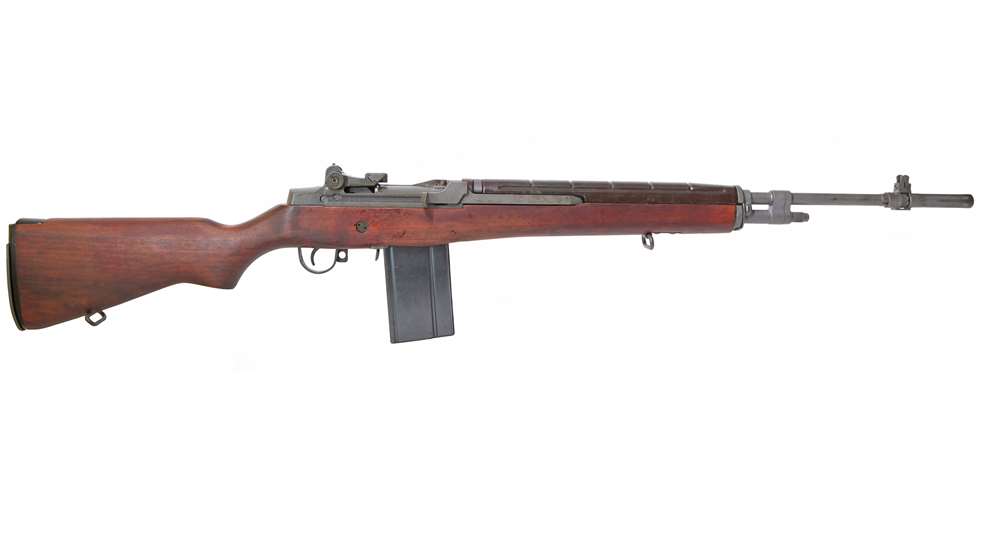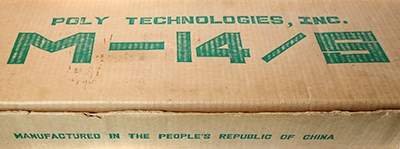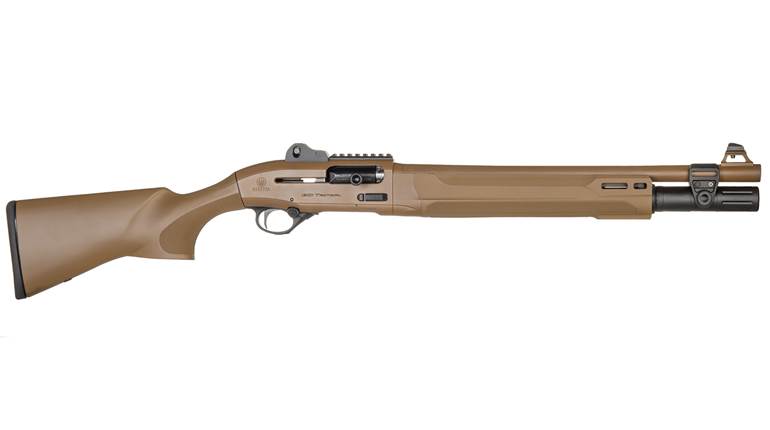
If imitation is the sincerest form of flattery, then a lot of firearm flattery has emanated from the People’s Republic of China. While developing some of its own unique firearm designs, the country is also known for making copies of everything from C96 Mauser “Broomhandle” pistols to Thompson submachine guns.
The origins of communist China-made M14 rifles (not to be confused with licensed manufacturing of the M14 in Taiwan using U.S.-supplied machinery) began soon after the United States started producing the design. These Chinese-made rifles were either reverse-engineered from captured specimens or built with “acquired” copies of the original technical data. Intended to be sent to communist rebels around the world, and in order to disguise their origin, the rifles copied U.S.-made M14s down to their markings. The plan was thwarted after several shipments were intercepted on their way to the Philippines, and many of the select-fire rifles that remained in China were destroyed.
Following the success of other Chinese firearm exports in the mid-1980s, production of semi-automatic M14-style rifles was revived for the commercial market using newly manufactured receivers and parts left over from the original 1960s production run. Importation into the U.S. began in 1988. All Chinese-made M14 rifles brought into the U.S. were manufactured at one location, State Arsenal 356, and then exported through either Poly Technologies, Inc. (PolyTech) or China North Industries Corporation (Norinco). In addition to the United States, semi-automatic, Chinese-made M14-type rifles were also exported to Australia, Canada and Europe.
While the wood and metal finish of most Chinese M14 rifles is not up to American standards, the rifles were built with forged receivers and operating rods and have chrome-lined barrels. Many parts interchange with U.S.-made M14-type rifles, though some components use metric-pattern threads.
 Imported Chinese M14 rifles will be found in several configurations. A few of the earliest rifles were imported before a March 1989 ban that included “M14S” as one of the 43 named models barred from importation. These rifles had complete original features, including bayonet lugs and flash suppressors. Those imported after that date either had parts such as the flash suppressor added in the United States before they were retailed or used an unslotted flash suppressor without the bayonet lug. From 1990 to 1994, Century Arms modified Chinese M14 rifles by removing the flash suppressor portion of the front sight base and replacing the military-style trapdoor buttplate assembly with a rubber recoil pad. Collectors differentiate between “side-stamped” rifles, with their markings on the left side of the receiver below the rear sight, and “heel-stamped” rifles with their markings on the receiver’s upper rear surface, as on the original M14. A May 1994 executive order banned the importation of all firearms from China, preventing any further M14 examples from appearing stateside.
Imported Chinese M14 rifles will be found in several configurations. A few of the earliest rifles were imported before a March 1989 ban that included “M14S” as one of the 43 named models barred from importation. These rifles had complete original features, including bayonet lugs and flash suppressors. Those imported after that date either had parts such as the flash suppressor added in the United States before they were retailed or used an unslotted flash suppressor without the bayonet lug. From 1990 to 1994, Century Arms modified Chinese M14 rifles by removing the flash suppressor portion of the front sight base and replacing the military-style trapdoor buttplate assembly with a rubber recoil pad. Collectors differentiate between “side-stamped” rifles, with their markings on the left side of the receiver below the rear sight, and “heel-stamped” rifles with their markings on the receiver’s upper rear surface, as on the original M14. A May 1994 executive order banned the importation of all firearms from China, preventing any further M14 examples from appearing stateside.
The example shown here is side-stamped and was imported by IDE (one of five companies that brought the rifles into the country) and exported through PolyTech. It features the solid flash suppressor with no bayonet lug and a military-style trapdoor buttplate. It is brand new in the box, unfired since it left the factory, and includes the originally supplied magazines, sling and maintenance kit. These early IDE rifles have a reputation for having some of the nicest fit and finish of all the Chinese-made M14s, and this example even appears to have a walnut stock. Its value is $1,500.
While the importation of Chinese-made M14 rifles was short-lived, the foreign-made, faithful copies have introduced countless shooters and collectors to a quintessential American battle rifle.
—Jeremiah Knupp, Field Editor
Gun: M-14/S
Manufacturer: Chinese State Arsenal 356 (Exported by Poly Technologies, Inc.)
Chambering: .308 Win.
Imported: 1988-1994
Condition: New (Modern Gun Standards)
Value: $1,500




































